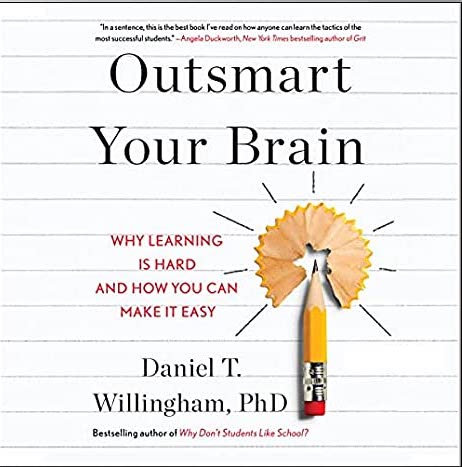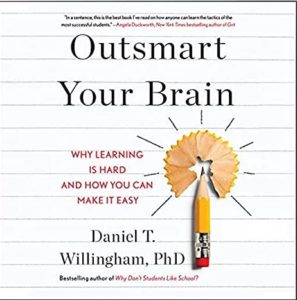
 Aligning with my work in this area, Daniel Willingham’s influential insights have greatly contributed to the field of neuroscience and education. His critique of learning styles and debunking of common learning myths and neuromyths have been pivotal. His critique of the premature application of neuroscience to the classroom advocates for translational relevance to teachers and ecological validity. Many of us in the field have been driven by his many talks, books, and insights.
Aligning with my work in this area, Daniel Willingham’s influential insights have greatly contributed to the field of neuroscience and education. His critique of learning styles and debunking of common learning myths and neuromyths have been pivotal. His critique of the premature application of neuroscience to the classroom advocates for translational relevance to teachers and ecological validity. Many of us in the field have been driven by his many talks, books, and insights.
Who of us has not invested extensive hours exploring new study methods and learning techniques, experimenting with trendy apps, organization routines, and innovative solutions to overcome our learning challenges. Often, we seek a quick fix or a supposed magic pills that line the self-help sections of bookstores. However, it’s easy to lose sight of the essence of learning amidst the pursuit of strategies, most of which are unsupported tradition. While this book doesn’t offer instant solutions, it effectively helps distinguish valuable approaches from ineffective ones. Its well-organized collection of learning hacks and tips assists in separating the wheat from the chaff. Daniel stresses that learning requires time and effort—inevitable aspects that can’t be bypassed. Nevertheless, Outsmart Your Brain: Why Learning is Hard and How You Can Make It Easy empowers readers to optimize their time and maximize their learning outcomes. As an educator and lifelong learner, I found this book brimming with invaluable insights to evaluate and enhance my own performance across educational domains.
The book’s origins reveal its essence. Daniel, a college instructor, witnessed his students struggling with learning difficulties. Over time, he honed his ability to identify their problems but lacked a clear solution. This prompted this cognitive scientist and ambitious educator to embark on a journey evaluating and verifying the real-life applicability of various memory and learning strategies derived from his cognition and memory research and investigating what made sense. The result of this ongoing exploration is the book at hand, which undoubtedly lives up to its promise.
This book serves as an indispensable and practical user manual for being a better student and teacher. Its value extends particularly to learning skills specialists, college students seeking lecture support, parents aiming to guide their children’s learning, or the college instructor that wants to do more than act as a sage on the stage simply reading off notes. The book’s well-structured chapters can be utilized as weekly lessons or applied individually.
Thematically organized, the book covers a wide array of essential topics to enhance learning and academic performance. It offers guidance on understanding lectures, effective note-taking strategies, making the most of labs, activities, and demonstrations, and techniques to enhance note organization for improved comprehension. Additionally, it provides valuable insights on tackling challenging readings, studying effectively for exams, assessing exam readiness, approaching different test formats. Nurturing social-emotional skills in education Daniel also covers efficient work planning, overcoming procrastination through highly effective tips, maintaining focus, building self-confidence, and coping with anxiety.
The strategies presented in the book strike a balance between empirical research, realism, and accessibility. It acknowledges the “education in the wild,” delving into what students truly encounter and guiding them in the right direction. Dr. Willingham expertly supports these concepts with personal anecdotes from his own experiences as an educator, effectively illustrating how to make learning enjoyable and, consequently, more successful. Furthermore, the book is enriched with citations that bolster the suggested strategies and challenge traditional approaches that have been proven to be ineffective – ones we still prolifically teach and practice. I hope you notice, as i did that each chapter can be a friendly audit of our practices and beliefs about learning, urging us to evaluate how students and teachers foster successful learning and prompting tangible improvements. As I reflect on my own study years, I genuinely regret not having had access to this book. However, with my students, this book gives us some tools to be better learners together.




